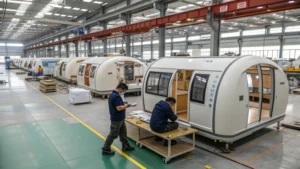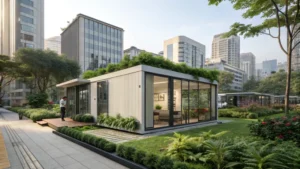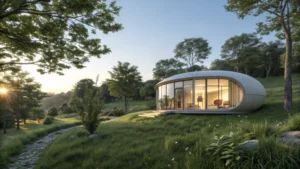
Ever wonder how long it takes to build a modular home from start to finish?
Building a modular home usually takes 3 to 6 months, encompassing design, site prep, factory construction, transport, and assembly. Custom designs and site conditions can influence this timeline.
I remember when I first considered modular homes. The thought of having a complete, ready-to-live-in house in just 3 to 6 months was mind-blowing. It’s much quicker than traditional builds, which can drag on for what feels like forever! Let’s break down each phase so you can see how this efficient process unfolds. From initial designs to laying the final brick, each step plays a vital role in getting your dream home ready faster than you'd think.
Modular homes take longer to build than traditional homes.False
Modular homes are generally quicker to build, taking 3-6 months.
Site conditions can affect modular home construction time.True
Factors like weather and terrain influence the construction timeline.
What Factors Influence the Construction Timeline of a Modular Home?
Building a modular home is like orchestrating a symphony—each part must play its role perfectly. Curious about what influences the tempo?
The construction timeline of a modular home hinges on factors like design customization, site readiness, factory build time, transportation logistics, and on-site assembly. Each phase adapts to specific project needs and external conditions.
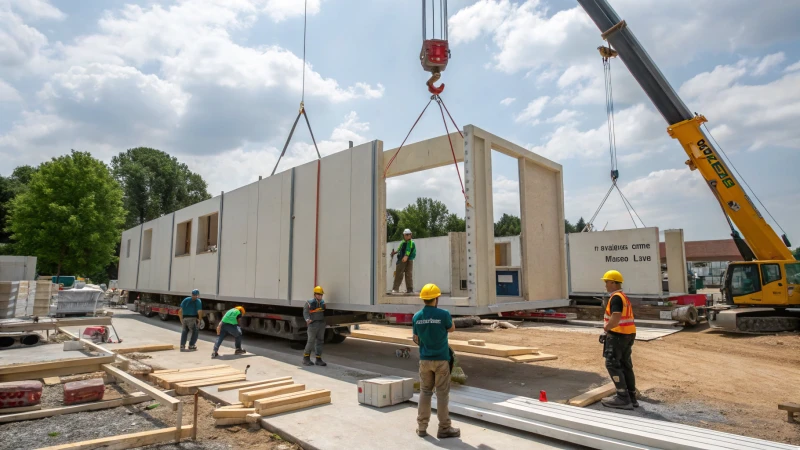
When I first considered building a modular home, I was amazed at how many variables could speed up or slow down the process. Let me walk you through the main factors that can make or break your timeline.
Design and Customization
The level of customization1 significantly impacts the timeline. Standard designs may move faster through the approval process, while custom designs require more time for planning and adjustments.
| Design Type | Estimated Time |
|---|---|
| Standard | 1-2 weeks |
| Custom | 3-4 weeks |
Customization is both exciting and daunting. I remember when I opted for a custom design; it felt like personalizing my dream home. But let me tell you, the extra time in planning and adjustments was worth every minute.
Site Preparation
Preparing the site involves tasks such as grading, foundation work, and utility setup. The complexity of the land and local regulations can extend this phase. For instance, a challenging terrain2 might require additional grading and specialized foundations.
My site had a bit of a slope, which added complexity to the grading and foundation work. Whether you're dealing with a simple flat lot or challenging terrain, this phase can take 2 to 6 weeks. Local regulations can also throw in some surprises, so staying informed is crucial.
Factory Construction
In a controlled factory setting, modular homes are built more efficiently. This environment minimizes delays caused by weather or labor shortages. The construction efficiency3 of factories generally ranges from 4 to 8 weeks, depending on the model and production capacity.
The factory phase is where the magic happens! It's like watching your vision come to life without worrying about weather delays or labor shortages.
Transportation and Assembly
Transporting modules to the site introduces variables like distance, route accessibility, and crane availability. Modules are generally assembled within 1 to 3 weeks after arrival, but unexpected logistical issues may arise.
Transporting modules is another story. The distance, accessibility of routes, and even crane availability can introduce unexpected hiccups. Once on-site, assembly typically takes 1 to 3 weeks—seeing those pieces come together is exhilarating!
Finishing Touches
Final steps include integrating plumbing, electrical systems, and interior finishes. These tasks can take an additional 2 to 4 weeks contingent upon local contractor availability and regulatory compliance4.
Finally, integrating plumbing, electrical systems, and interior finishes completes the puzzle. For me, waiting those last few weeks felt like an eternity but knowing it was all coming together helped me stay patient.
Custom designs extend modular home timelines.True
Custom designs require more planning and adjustments, taking 3-4 weeks.
Factory construction is slower than site-built homes.False
Factory construction is efficient, taking 4-8 weeks, minimizing delays.
How Does Site Preparation Affect Modular Home Construction Time?
Building a modular home is like crafting a unique piece of art, and site preparation is your canvas—it’s vital for setting the right foundation.
Site preparation impacts modular home construction time by affecting the foundation work and site accessibility. Proper planning can streamline the build, while delays here might extend the overall timeline.

The Role of Foundation Work
When I first embarked on my modular home project, I quickly realized that foundation work is the backbone of everything. Clearing the land, grading it perfectly, and laying a solid foundation isn't just about getting your hands dirty—it's about creating a stable base for your dream home. Depending on how complicated the land is, this can take anywhere from 2 to 6 weeks. I’ve learned firsthand that a properly prepared site5 is crucial for avoiding delays and ensuring everything goes smoothly.
Importance of Accessibility
The excitement of seeing those modular units arriving is indescribable. However, having easy access for cranes and delivery trucks is essential for keeping that excitement alive and well. A site that's easily accessible means you’re looking at a delivery and assembly time of just 1 to 3 weeks. But if you’re dealing with tricky terrain or a remote location, you might need to get creative with additional preparation or specialized equipment, which can stretch out the timeline.
Weather and Environmental Factors
Even though modular homes are mostly built indoors, site preparation still dances to the tune of the weather. Rain, snow, or extreme heat can put a damper on grading and foundation work. Having a detailed weather plan6 can really help you work around Mother Nature’s whims by scheduling tasks during more favorable conditions.
| Factor | Impact on Time |
|---|---|
| Land Complexity | 2-6 weeks additional |
| Accessibility | Affects delivery & assembly |
| Weather Conditions | Can delay site work |
Mitigation Strategies
To keep things on track, consider bringing in seasoned contractors who know the local scene inside out. They can offer invaluable insights into efficient planning7 and execution that I found indispensable. Spotting potential hiccups early on allows for proactive measures, reducing unexpected setbacks during construction. It’s all about being prepared so you can enjoy watching your modular masterpiece come together without unnecessary stress.
Complex land increases foundation work time by 2-6 weeks.True
Land complexity directly affects the duration of foundation work, ranging from 2 to 6 weeks.
Weather conditions never affect modular home site preparation.False
Weather can delay grading and foundation work, impacting site preparation timelines.
Why is Factory Construction More Efficient Than On-Site Building?
Imagine a world where building your dream space is as smooth as a well-oiled machine. Factory construction is making that dream a reality with its efficiency and precision.
Factory construction outshines traditional on-site building through its controlled environments, minimizing weather delays, utilizing standardized processes, and benefiting from bulk material purchasing, leading to faster completion, less waste, and reduced labor costs.
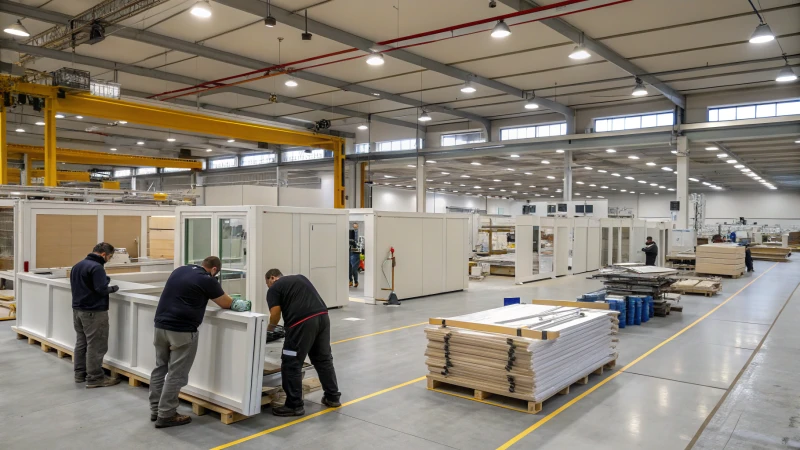
Controlled Environment Benefits
I've always been fascinated by the predictability of factory environments. Unlike the unpredictability of outdoor construction, factories offer a weather-proof haven where every piece of the puzzle fits together perfectly. It reminds me of the time when a sudden storm halted our on-site project for days, leaving us at the mercy of Mother Nature. But in a factory, it's different. Projects move along at a steady clip, rain or shine, ensuring we meet deadlines and maintain high-quality standards.
Standardized Processes and Quality Control
Think about those moments when everything just clicks into place—like assembling a piece of flat-pack furniture without any leftover screws. That's what factory construction feels like to me. With strict quality checks and standardized processes, there's a sense of assurance that every module produced meets the highest standards. This consistency not only saves time but also prevents the headaches of fixing mistakes later on.
-
Aspect Factory Construction On-Site Building Weather Delays Minimal Frequent Quality Control High Variable Waste Reduction Significant Limited
Efficient Use of Materials
I remember once visiting a bustling factory floor, and it struck me how they managed their resources so efficiently. By purchasing materials in bulk, factories not only save costs but also minimize waste. This approach makes me think about how we could extend these savings to our clients while supporting sustainability efforts—truly a win-win.
Bulk procurement8 allows for better inventory management and minimizes delays related to material shortages.
Labor Costs and Time Savings
Picture this: fewer workers needed, faster turnaround times, and lower costs. It's like having a magic wand to speed up construction without compromising on quality. This streamlined approach has turned months-long projects into mere weeks, freeing up resources to focus on innovation and customization.
Transportation and Assembly Advantages
There's something incredibly satisfying about seeing modules come together seamlessly on-site. Transporting these large sections in one go not only reduces the overall construction timeline but also minimizes disruptions at the build site. It's akin to watching a well-rehearsed orchestra performing flawlessly.
Sustainability Aspects
Every step in factory construction seems to align with eco-friendly objectives. Precision in building reduces errors and waste, echoing my commitment to sustainability. It's about creating spaces that not only serve immediate needs but also leave a lighter footprint on our planet.
Ultimately, choosing factory construction over traditional methods feels like choosing efficiency and sustainability over uncertainty and waste. For modern projects focused on sustainability9, this method offers an irresistible blend of speed, quality, and eco-consciousness.
Factory construction eliminates weather delays.True
Controlled environments in factories prevent weather-related interruptions.
On-site building has better quality control than factory construction.False
Factory settings have standardized processes ensuring consistent quality.
How do you assemble a modular home on-site?
Ever wondered what it takes to piece together a modular home right at your desired location? Let's explore the fascinating journey of turning prefab pieces into your dream dwelling.
Assembling a modular home on-site involves preparing the site, delivering the modules, craning them into place, securing them, and completing the finishes. Each step is vital for a smooth assembly process.
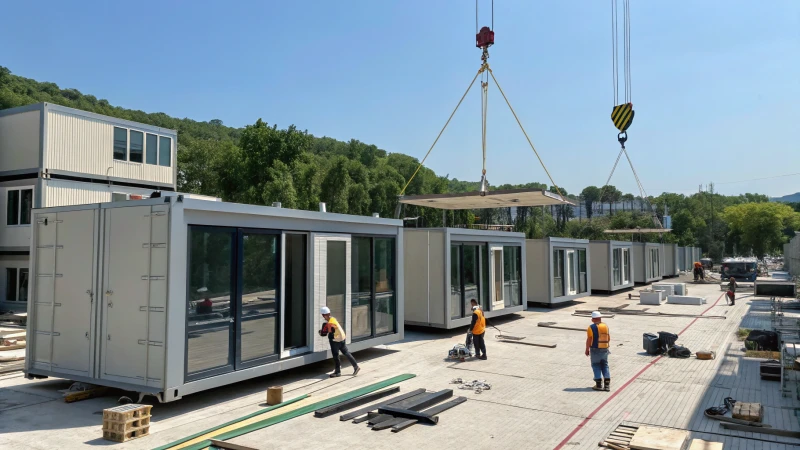
Site Preparation
I remember standing on a plot of land, teeming with excitement and a little apprehension. Preparing the site felt like laying the groundwork for dreams, literally. This stage involved not just clearing trees and debris but also leveling the land and setting a strong foundation. It's like prepping for a big adventure where every detail counts.
| Task | Description |
|---|---|
| Clearing | Removing trees and debris |
| Grading | Leveling the land |
| Foundation | Pouring concrete base |
Delivery of Modules
The day the modules arrived was unforgettable. They came rolling in like giant Lego blocks ready to be transformed. Transporting these massive structures required meticulous planning to ensure they arrived safely. It was like Christmas morning, but instead of toys, I had pieces of my future home. Ensuring safe transport10 is vital.
Craning Modules Into Place
Watching the crane lift the modules was both nerve-wracking and thrilling. Precision was key here, aligning each piece perfectly on the foundation. It reminded me of solving a giant puzzle, where every piece had to fit just right.
Securing the Modules
Once in place, we bolted everything together securely. This was the stage where it all started feeling real—seeing the structure come to life as a solid and stable home. Making sure every joint was sealed tight was crucial, much like ensuring all loose ends are tied before embarking on a new journey.
Interior and Exterior Finishes
The final touches were akin to adding flourishes to a masterpiece. From plumbing to bespoke interior designs, every detail mattered. Walking through the finished space for the first time felt like stepping into a dream fully realized.
For those curious about design customization options11, there are endless possibilities to tailor your modular home to fit your lifestyle perfectly.
Site preparation includes clearing and grading the land.True
Site preparation involves clearing debris and leveling the ground before construction.
Modules are secured using glue and nails after placement.False
Modules are secured with bolts and connectors, not glue and nails.
Conclusion
Building a modular home typically takes 3 to 6 months, influenced by design customization, site preparation, factory construction efficiency, and transportation logistics.
-
Learn how opting for customized designs impacts construction timelines and project complexity. ↩
-
Explore common site preparation challenges that can extend your modular home's construction timeline. ↩
-
Understand why factory-built environments improve construction efficiency for modular homes. ↩
-
Discover the regulatory hurdles that may affect finishing timelines in modular home projects. ↩
-
Understanding the benefits of proper site preparation helps in ensuring timely construction and a sturdy foundation. ↩
-
Learning about weather planning minimizes delays in site work, leading to a smoother construction process. ↩
-
Efficient planning strategies can streamline construction timelines, mitigating potential delays effectively. ↩
-
Discover how buying materials in bulk can lead to cost savings and reduced waste. ↩
-
Explore how factory-based methods contribute to sustainability through efficient resource use. ↩
-
Learn about the logistics and safety measures involved in transporting large modular home sections. ↩
-
Discover how you can personalize your modular home with unique design features and finishes. ↩





